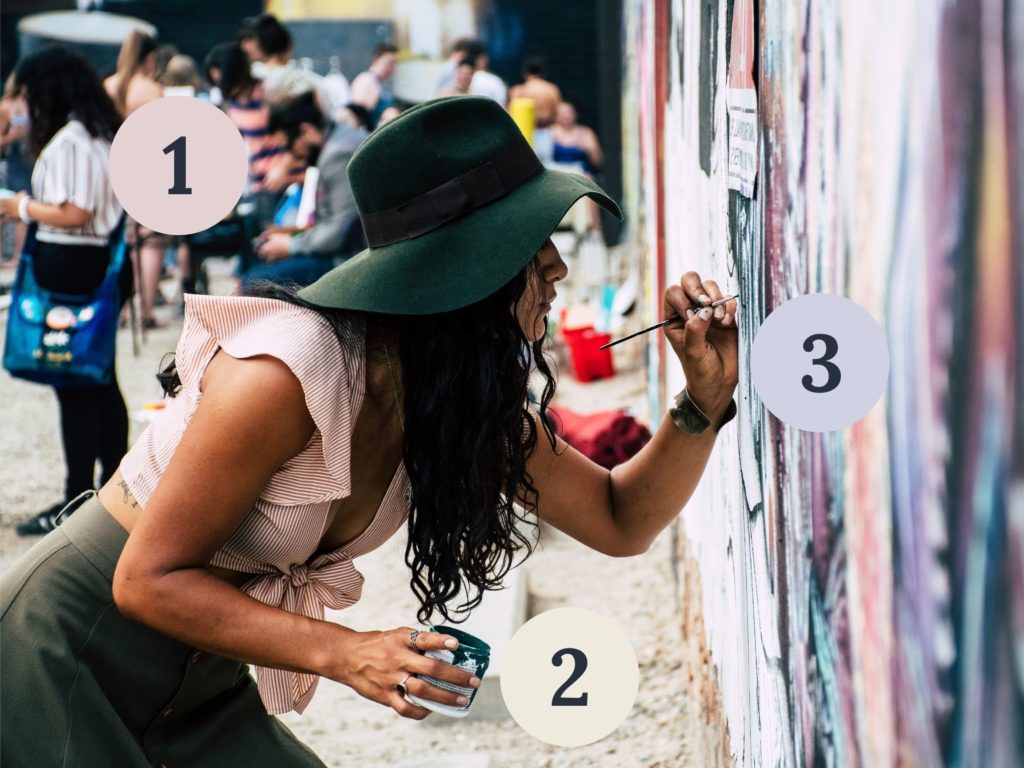During the interview, Elaine Spero mentioned the need to work creatively. It is a requirement and reward for those in the field of instructional design.
In her interview, Elaine discusses instructional design as a creative endeavor that requires artistic and technical skills.
Several posts in this blog have focused on scientific and technical aspects of instructional design, such as theory, LMSs and analysis. However, as Elaine mentions and the chart below describes, instructional design is also an art and craft.

An Inspired Art
All design and creative work requires an artistic touch and muse. This inspiration for design can come from many different places. We will expand on three sources mentioned by Elaine in her interview: people, materials and experience.

1 – People: SMEs and the L&D community
Just as a painter is influenced by other painters and their surrounding community, instructional designers (IDs) are too. IDs reach out to many people to gather information on the topic and inform their design decisions, when working on a project .
Subject matter experts (SMEs) are a primary source of inspiration and knowledge for any project. By speaking with them, IDs can learn about a subject and also get a feeling for the mood and presentation style that suit a topic well.
Colleagues in the learning and development (L&D) community are also excellent resources. Elaine mentioned E-Learning Heroes, a community based around Articulate 360, e-learning creation software. Ideas and examples can be brought to the community for critique and inspirational models of other’s work is plentiful.
2- Materials: Tools
A work of art created with paint and a brush will certainly be different than one formed from clay and a modeling knife. The materials and tools a creator has at their disposal influence the work they produce. The rise of YouTube led Elaine to shift her career from in-person training to investigating the potential of online learning. Continually exploring and playing with mediums expands the range of design possibilities.
3- Experience: Outside interests
An artist cannot help bringing a bit of themselves into their work, and it is the same with instructional designers. A broad base of knowledge and experience enrich the work created. Elaine considers study of non-ID topics to be an important part of her professional development strategy. She has recently taken courses on coaching and diversity with the intent to bring the high level concepts into her design.
Sir Ken Robinson believed education should both include and be designed with creativity. He also discussed the benefits of broadening knowledge areas and flexibility.
A Practiced Craft
The technical skills and artistic skills of instructional design need to be practiced and refined to become a true craft.

1 – Flexibility
Just as a master craftsman learns to work with a variety of tools, the instructional designer must also be flexible with their tools. Since many of those tools are digital, and technology is changing at a rapid pace, IDs need to keep up with the changes and remain flexible in their approaches. Two of the tools Elaine mentioned were: Camtasia, a screen recording and video editing tool, and Articulate 360, an elearning course creator.
2 – Reverse Engineering
A craft is mastered through practice. One way to practice is by examining and following the examples of others. The finished work of others can also be carefully picked apart, reverse engineered, so that the process used to create it can be studied. Not only can existing instructional design be reverse engineered, but this can also be effectively used to develop innovative strategies using other successful mediums such as game design.
3 – Portfolio
The practice involved with mastering the craft of instructional design will lead to an ample portfolio of work. This portfolio can be collected and presented to prospective employers or clients. It can also be shared with fellow designers to serve as inspiration for them.
Interview with Elaine Spero
To next blog post – Learning the Learner
Back to previous blog post – Migrating Online
